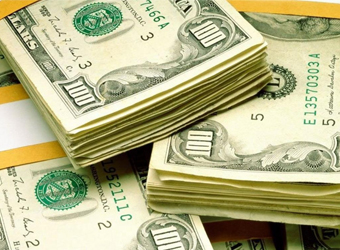The dollar dropped against a basket of major currencies on Friday, after weaker-than-forecast data on consumer prices and retail sales in June raised doubts about U.S. economic growth and whether the Federal Reserve would hike interest rates again in 2017.
U.S. consumer prices were unchanged in June and retail sales fell for a second straight month, pointing to tame inflation and soft domestic demand.
Economists had forecast the CPI edging up 0.1 percent last month. Its drop of 0.1 percent in May and the lack of a rebound in June could trouble Fed officials who have largely viewed the recent moderation in price pressures as transitory.
“The CPI data begs the question, at what point does transitory becomes something that is more sustained, in terms of the softness,” said Richard Franulovich, senior currency strategist at Westpac Banking Corp in New York.
The dollar index, which tracks the greenback against six major rivals, was down 0.62 percent to 95.14 after earlier falling to 95.132, its lowest since September 2016.
U.S. interest rates futures rose as traders pared their view the Federal Reserve would increase rates again in 2017.
“Moderating price pressures suggest the Fed may be less willing to lift U.S. borrowing costs for a third time this year,” Omer Esiner, chief market analyst at Commonwealth FX in Washington, said in a note.
The U.S. dollar remained broadly on the back foot against major currencies.
Against the Japanese yen, the greenback was down 0.65 percent to 112.53 yen, after hitting a near two-week low of 112.28 yen.
“Dollar-yen has got a lot more downside and it could easily go to 110 yen before the summer is out, in fact the next few weeks, especially with U.S. yields heading lower,” Franulovich said.
The higher yielding Aussie and New Zealand dollars jumped, with the Australian dollar hitting a near 15-month high as risk appetite was robust with global stock markets hitting record highs and after dovish comments from global policymakers.
The Aussie was 1.23 percent higher against the greenback at $0.7821.
South Africa’s rand hit a two-week high against the greenback.
The euro was up 0.61 percent against the greenback to $1.1465 and sterling was 1.24 percent higher at $1.3096, after hitting $1.3093, its highest since September, 2016.
Source: Reuters



